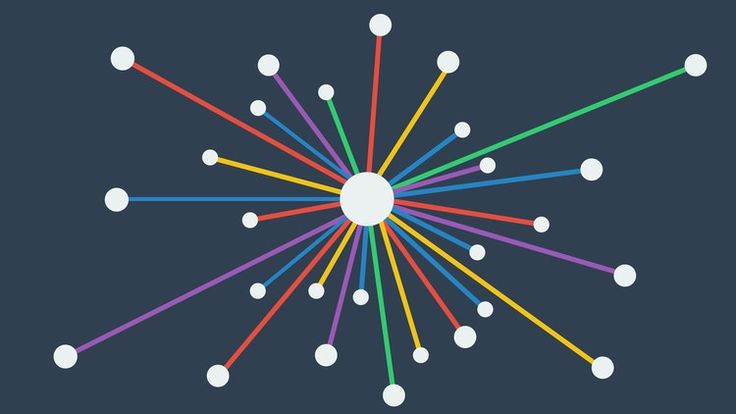In the ever-expanding realm of data science, understanding complex relationships within data sets is crucial for deriving meaningful insights. One powerful tool that has emerged to address this challenge is graph theory. Originating from mathematics, graph theory has found a profound application in the field of data science, offering a unique perspective to analyze and interpret interconnected data. In this blog post, we’ll delve into the fascinating ways graph theory is transforming the landscape of data science, unlocking hidden patterns and relationships that traditional methods might overlook.
Graph Theory Basics
Graph theory is a branch of mathematics that studies the relationships and connections between entities using abstract structures called graphs. A graph consists of two main components: nodes (vertices) and edges. Nodes represent individual entities, and edges denote the relationships or connections between them. These relationships can be directed or undirected, reflecting whether the connection has a specific direction or not. Graphs can also be weighted, meaning that each edge has an associated numerical value. The connections between nodes are crucial for understanding the structure and patterns within a graph. Graph theory introduces various concepts and metrics, such as degrees, adjacency matrices, and connectivity algorithms like Breadth-First Search and Depth-First Search. This mathematical framework provides a versatile tool for modeling and analyzing relationships in diverse fields, ranging from social networks and transportation systems to biological pathways and data science applications.
Representation of Data as Graphs
Representing data as graphs involves transforming information into a visual structure comprised of nodes and edges. Nodes represent individual entities, while edges signify relationships or connections between these entities. This model is particularly advantageous in capturing complex interdependencies within the data. Consider a scenario where you want to analyze relationships in a social network. Each person can be represented as a node, and friendships or interactions become edges connecting these nodes. The graph representation excels in illustrating the intricacies of these relationships, providing a more intuitive understanding than traditional tabular formats.
The key advantage of graph data representation lies in its ability to uncover patterns and insights that may be obscured in other data structures. Graph databases are designed to efficiently store and query these interconnected structures, enabling quick and targeted analysis of relationships. This proves beneficial in various applications such as fraud detection, recommendation systems, and network analysis. For instance, in a recommendation system, nodes could represent users and products, while edges denote interactions or preferences. By traversing this graph, the system can efficiently identify potential recommendations based on the preferences and behaviors of similar users. In essence, the graph representation offers a powerful and flexible framework for analyzing complex relationships, making it a valuable asset in the realm of data science.
Graph Algorithms in Data Science
Here, some examples:
- Breadth-First Search (BFS):
- Description: BFS is a graph traversal algorithm that explores a graph level by level, starting from a specified source node. It uses a queue to visit neighboring nodes before moving to deeper levels.
- Example Usage in Data Science: BFS can be applied in social network analysis to find the shortest path between two individuals or to discover connected components in a graph, helping identify distinct communities within a network.
- Depth-First Search (DFS):
- Description: DFS is another traversal algorithm that explores as far as possible along each branch before backtracking. It uses a stack to manage the traversal process.
- Example Usage in Data Science: DFS can be employed in detecting cycles within graphs, which is valuable in fraud detection scenarios. For instance, in financial transactions, DFS can help identify suspicious patterns indicative of fraudulent activities.
- Dijkstra’s Algorithm:
- Description: Dijkstra’s Algorithm finds the shortest path between two nodes in a weighted graph. It maintains a priority queue to iteratively select the node with the smallest tentative distance.
- Example Usage in Data Science: In transportation networks or logistics, Dijkstra’s Algorithm can be used to find the most efficient route between two locations, considering factors like distance or travel time.
- PageRank Algorithm:
- Description: Originally developed by Google for ranking web pages, PageRank assigns a numerical weight to each element in a hyperlinked set based on the quantity and quality of links to it.
- Example Usage in Data Science: In recommendation systems, PageRank can be adapted to identify influential nodes or items in a graph. For instance, in a product recommendation graph, items with higher PageRank may be suggested more frequently, considering their popularity and connections.
These algorithms showcase the versatility of graph theory in data science, from uncovering patterns in social networks to optimizing routes in transportation systems and enhancing recommendation algorithms.
Conclusion
In conclusion, the integration of graph theory into the fabric of data science provides a powerful lens through which to analyze and interpret complex relationships within datasets. As we’ve explored, from uncovering social network dynamics to enhancing recommendation systems, graph theory opens new avenues for extracting valuable insights. As the data science landscape continues to evolve, the symbiotic relationship between graph theory and data analysis promises to unveil hidden patterns and contribute to more accurate and robust decision-making processes. Embracing these graph-based approaches is not just an option; it’s a transformative step towards unlocking the full potential of data science.


